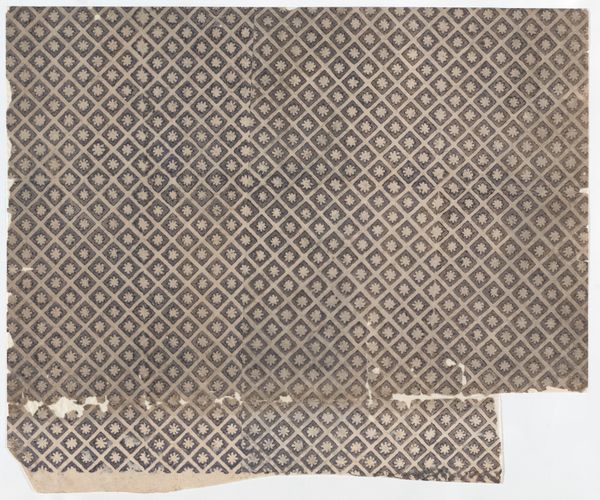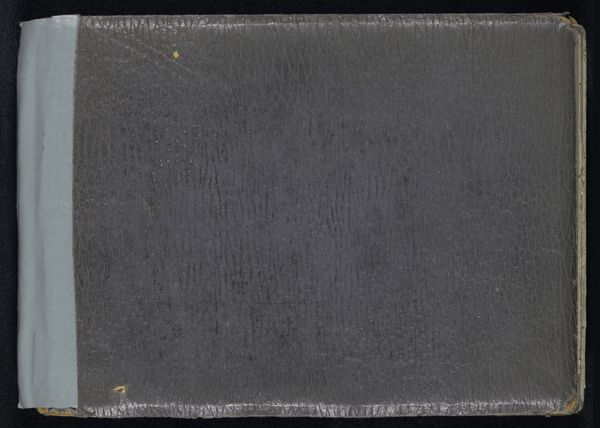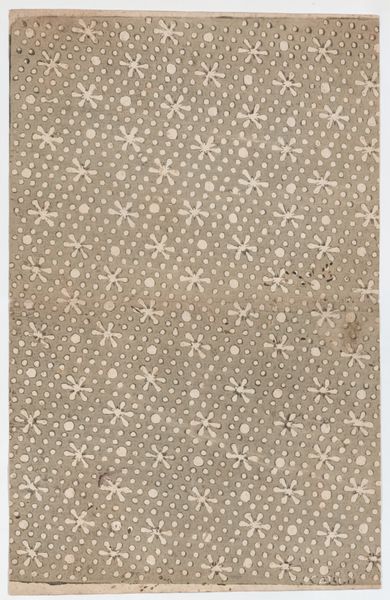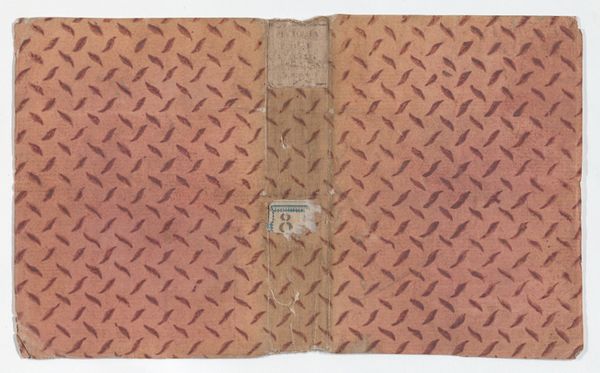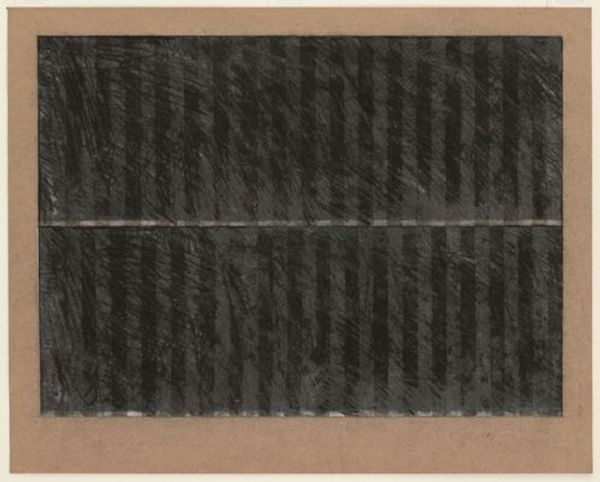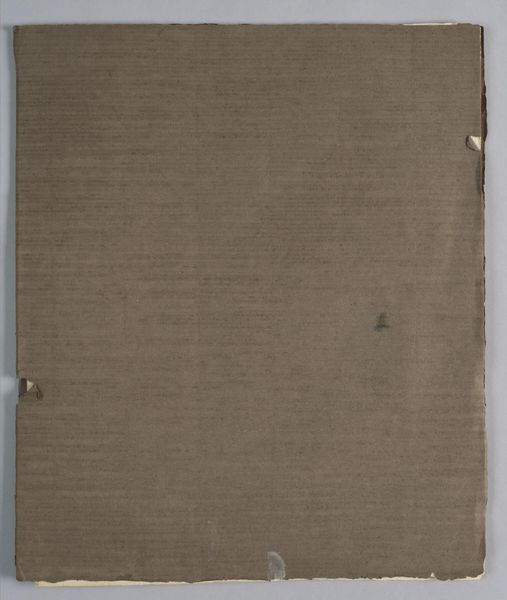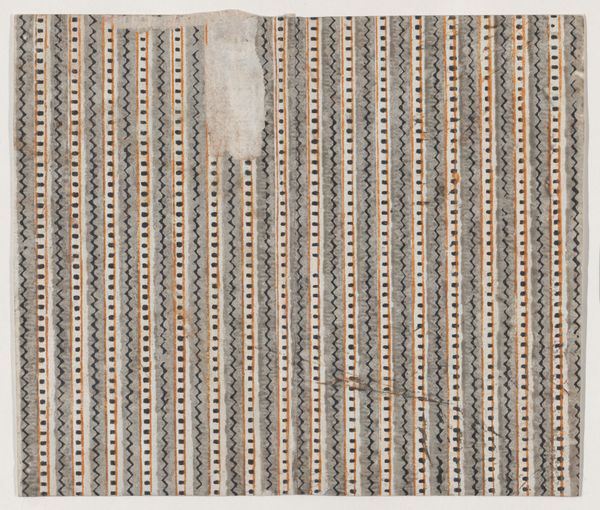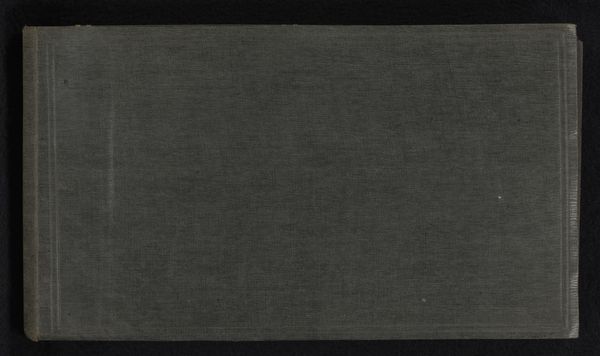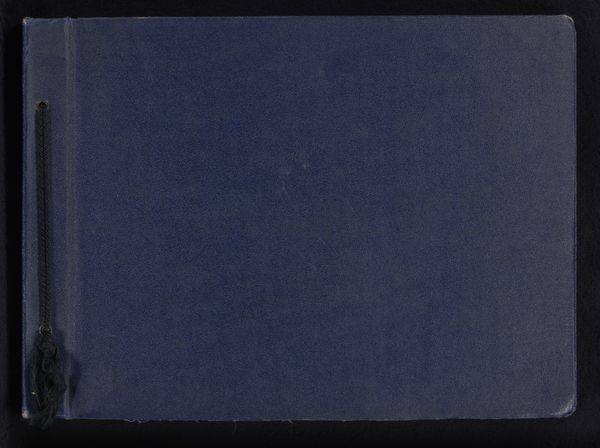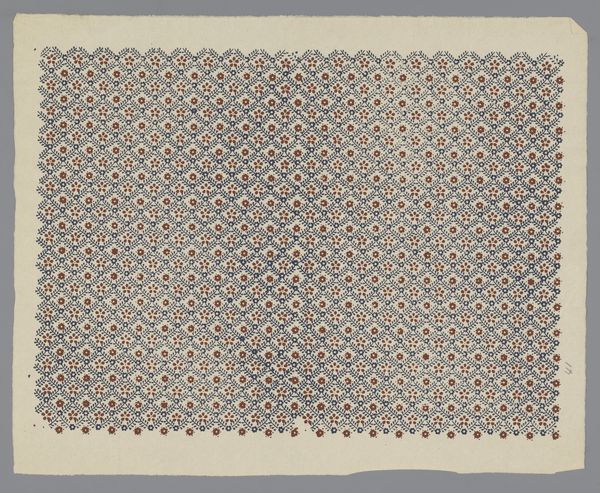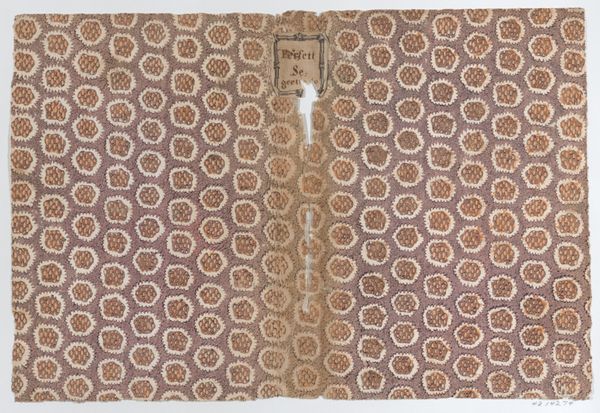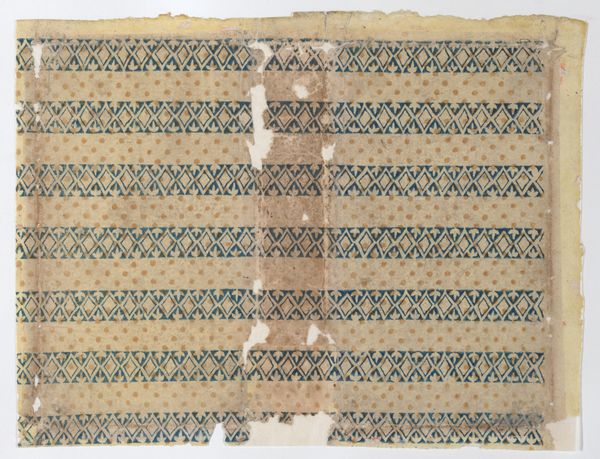
drawing, print, textile
#
drawing
# print
#
textile
#
geometric pattern
#
abstract pattern
#
organic pattern
#
geometric
#
decorative-art
Dimensions: Sheet: 8 5/16 × 11 7/16 in. (21.1 × 29.1 cm)
Copyright: Public Domain
Curator: This intriguing patterned sheet, created sometime between 1800 and 1900, resides here at the Metropolitan Museum of Art. It's presented as a drawing, potentially a print or even a textile design, bearing an overall abstract composition. What are your first thoughts? Editor: It has a really hypnotic quality. The repeating teardrop or seed-like shapes…they give it a pulsating rhythm that's both calming and unsettling. I'm immediately thinking of textile patterns and their deep-rooted connection to cultural identity and social hierarchies. Curator: Absolutely. The labor and skill invested in such a meticulously rendered pattern, whether intended for fabric or perhaps wallpaper, is something to consider. And let's consider the anonymous creator—the implications of this unknown individual's place within artistic and manufacturing trades. How does the anonymity affect your interpretation? Editor: It amplifies my curiosity, frankly. Who were they designing for? What market were they hoping to reach? What was their social standing? Was the creative endeavor connected to some kind of social movement? This work might engage with or push against expectations for how to utilize "textile" as a cultural language. Curator: These are fascinating questions. It is worth remembering, though, that many designs were produced under constraints dictated by industry and commerce, influenced less by personal expression than by market trends or manufacturing limitations. The actual method of creating this—the blocks, the print medium, even the type of paper or fabric initially envisioned for the design—also greatly affected the final visual expression, a constraint. Editor: Yes, and in that very push-and-pull dynamic between design freedom and those kinds of limitations is where art emerges, where cultural values become embedded and get reproduced or even transformed. Curator: Agreed. Even the perceived "organic" nature of this repeated motif seems influenced by constraints or considerations related to textile production, to printing. The pattern is ordered rather than natural, a kind of compromise. Editor: True, and the interplay of geometric and organic pattern is key. In many cultures, abstracting organic forms into patterns acts as a kind of cultural coding, inscribing specific narratives and values within seemingly decorative motifs. It also reflects larger tensions present when negotiating modern expectations with traditionally revered ways of doing. Curator: Precisely! Thinking of this sheet, considering the material implications and potential intended usage, really allows the object to "speak." Editor: It underscores the importance of situating art within the complexities of social history, forcing us to interrogate power structures, artistic intention, and legacies in ways that expand the experience of a pattern. It seems simple, but that pattern holds worlds.
Comments
No comments
Be the first to comment and join the conversation on the ultimate creative platform.
